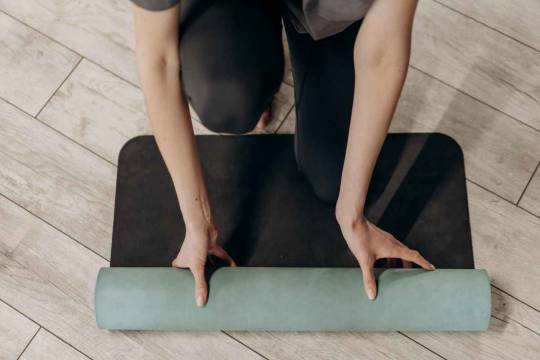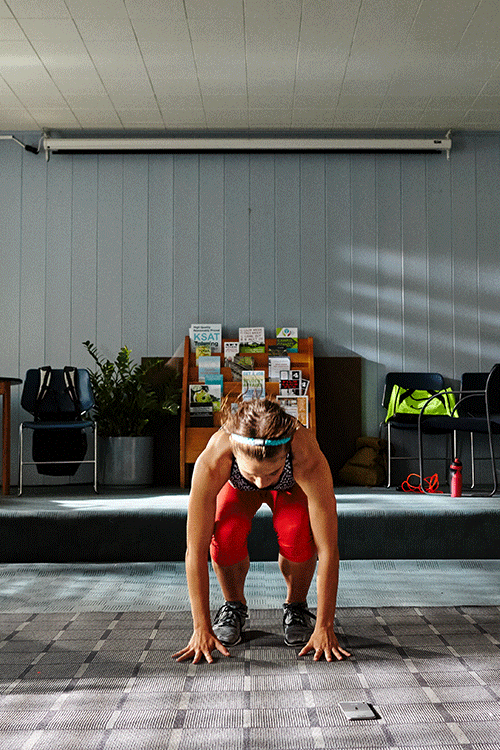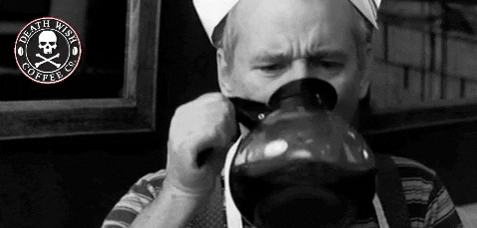#aerobic anaerobic exercise
Text
Pushing Your Limits: The Benefits of Anaerobic Exercises.
Anaerobic exercise refers to high-intensity, short-duration physical activity that relies on energy sources that do not require oxygen. This type of exercise is characterized by quick bursts of activity that push the body to its limits, such as weightlifting, sprinting, or high-intensity interval training (HIIT). Anaerobic workout helps build strength, power, and speed, and improves overall athletic performance. It also has several health benefits, such as increasing metabolism and reducing the risk of chronic diseases such as type 2 diabetes. However, anaerobic workout can be difficult and should be done with caution, as a Improper technique or overexertion can lead to injury.

Benefits of Anaerobic Exercises
Anaerobic training provides a range of physical and mental benefits and is an important part of a complete fitness program. It provides a range of Benefits, Include:
Increased Muscle Strength
Improved Endurance
Increased Metabolism
Reduced Risk of Chronic Diseases
Improved Bone Health
Improved Mental Health
Increased athletic Performance
#aerobic#anaerobic#exercise#workout#weight loss#wellness#workoutmotivation#strength#strengthtraining#fitness#fat loss#fitness motivation#muscle#gym#gymmotivation#gym life#gymspiration#mental wellbeing#health#health and wellness
2 notes
·
View notes
Text
The Chief Benefits of Anaerobic Exercise
Anaerobic exercise, also known as high-intensity interval training (HIIT), is any type of exercise that is done at or above 85% of your maximum heart rate for short periods of time. This type of exercise is beneficial for a number of reasons, but the chief benefit is its ability to build muscle.Anaerobic exercise is any type of exercise that is performed without oxygen. This means that the body…

View On WordPress
#Anaerobic Exercise#what are some benefits of regular exercise on psychological well-being#what are the benefits of aerobic exercise#what are the benefits of anaerobic exercise#what are the benefits of kegel exercises#what is one benefit of starting an exercise program slowly
1 note
·
View note
Text
The Complete Guide to Target Heart Rate Zones and Monitoring for Exercise
Target heart rate and heart rate zones are crucial concepts for anyone looking to optimize their exercise routine and training. Your heart rate serves as an objective measure of exercise intensity and ensures you are working at the right levels to achieve your fitness goals, whether that be improving cardiovascular health, building endurance, or boosting speed and power. Read More
#heart rate zones#target heart rate calculator#heart rate training zones#exercise heart rate#monitoring heart rate#maximum heart rate#heart rate monitor#aerobic heart rate zone#anaerobic heart rate zone#cardio heart rate training#heart rate training benefits#heart rate zone chart#Karvonen formula#heart rate tracking#optimal heart rate for exercise#fat burning heart rate zone#cardiovascular training heart rate
0 notes
Video
youtube
HIIT for Fat Loss and Muscle Gain: The Ultimate Guide
#youtube#HIIT high-intensity interval training fat loss muscle gain metabolism growth hormone endurance fat burning aerobic exercise anaerobic exerci
0 notes
Text
What is Anaerobic and Aerobic Exercise?
When it comes to training, whether it is professional sports or general exercise, there are two main types of activity one can do.
Those two types are “anaerobic” and “aerobic” exercises, each providing a different stimulus for the body and, thus, a different end result.
You can read a full breakdown of the two here or keep reading for a short summary.
What is Anaerobic Exercise?
Anaerobic…

View On WordPress
0 notes
Text
TABATA WORKOUT ( Part 1 )
Tabata training, a sort of HIIT activity, is said to be one of the most effective ways to burn fat while improving overall health and fitness in as little as 4 minutes!
With more and more members, particularly Tabata newcomers, asking questions about the Tabata workout and what it entails, we wanted to address some of the most common inquiries.
What Is The Tabata Workout?
Tabata is a type of High-Intensity Interval Training (HIIT) that involves very short, precise periods. All HIIT exercise consists of periods of high-intensity training followed by periods of moderate-intensity or rest, though the times can vary. Each Tabata exercise includes the following:
20 seconds of extremely intense, all-out movement
10 seconds of rest
Repeat 8 times for a total of 4 minutes
Typically, a workout may mix numerous rounds to create a lengthier workout (about 20 minutes) that targets multiple muscle groups and works the cardiovascular system while remaining easy to fit into a busy schedule. A four-minute round could include the same exercise or a variety of activities, such as:
20 seconds of sprinting + 10 seconds rest
20 seconds of push ups + 10 seconds rest
20 seconds of mountain climbers + 10 seconds rest
20 seconds of squat jacks + 10 seconds rest
What Are The Benefits Of A Tabata Workout?
Tabata training provides numerous health and lifestyle benefits. These include (but are not necessarily limited to):
Boosted anaerobic capacity: Anaerobic exercise enhances your body's tolerance to lactic acid, allowing you to work out more efficiently before reaching the lactate threshold. This means you can perform at a higher intensity for longer periods.
Improved aerobic endurance: Aerobic endurance refers to your body's ability to use oxygen to fuel physical exertion. The more efficient you are, the easier it is to exercise, allowing you to push harder and for longer periods.
Fat burning: Tabata and other HIIT workouts push your body to its limits, increasing your heart rate and burning a lot of energy, making them ideal for burning calories (and thus fat). As an anaerobic exercise, it depletes the body's oxygen supplies, and restoring them burns calories long after the session.
Convenience: Tabata workouts may easily fit into even the busiest schedule. There is no need for equipment or a large amount of space; you could even conduct a Tabata workout while waiting for the kettle to boil!
Where Did Tabata Come From?
Tabata originated in Japan and was named after Dr. Izumi Tabata, a professor at Ritsumeikan University. He was employed by the Japanese speed skating team in the 1990s to evaluate the success of their training regimen, which consisted of brief maximal bursts of sprints followed by short rest periods. Dr. Tabata conducted thorough scientific investigations and was able to demonstrate the remarkable benefits of this training approach.
Are Tabata Workouts Effective?
Tabata workouts may sound too wonderful to be true, but they are scientifically proven. Dr. Tabata's study contrasted two groups on a six-week fitness program: one group completed an hour of moderate-intensity exercise on a stationary cycle five times a week (1800 minutes of training), and the other group did high-intensity Tabata-style training four times a week (120 minutes).
While both groups improved their aerobic capacity, the Tabarta group performed significantly better, with a 15% increase in VO2 max (which indicates cardiovascular health and maximal aerobic power) and a 28% increase in anaerobic fitness compared to no improvements in the moderate exercise group.
Steady-state, moderate-intensity cardio has benefits and should not be overlooked, but this demonstrates how beneficial short Tabata sessions are!
#Fitness#Health#gym#Workout#Exercise#FitnessGoals#GymLife#FitLife#Cardio#StrengthTraining#Yoga#Pilates#Running#FitFam#HealthyLiving#FitnessJourney#FitnessMotivation#Fitspo#Fitspiration#HealthyLifestyle#Sweat#TrainHard#NoPainNoGain#FitnessAddict#FitGirl#FitGuys#nutrition
3 notes
·
View notes
Text
Just saw a Red Bull ad that promoted drinking it while jogging or cycling and I need to make a PSA that you should never do that. If you're going to engage in aerobic exercise, your heart rate will go up, and the last thing you need is caffeine kicking your heart rate even higher. Caffeine is fine to consume if you're going to be doing something anaerobic like weightlifting or yoga or stretching or anything that doesn't push your heart rate higher or puts stress on your cardiovascular system. But if you're gonna be stressing your heart out as part of your exercise, don't consume caffeine right before or while doing it.
9 notes
·
View notes
Video
youtube
(via Myalgic Encephalomyelitis/Chronic Fatigue Syndrome in the times of COVID - YouTube)
I want to highlight a very important paper published in January in Nature Communications by a group from Amsterdam. They looked at muscle abnormalities worsening after exercise in patients with Long COVID. This symptom is very common in chronic fatigue syndrome, and we see it in over 80% of patients with Long COVID. In this study, they included 25 patients with Long COVID and 21 age- and sex-matched controls who had fully recovered from COVID-19. They collected blood and muscle biopsies before and after exercise. Both groups were healthy and socially active. None of the participants were hospitalized due to COVID-19 infections. Fatigue questionnaires and exercise data confirmed the impact of Long COVID on daily lives.
The study found that people with Long COVID have lower VO2 max, indicating decreased oxygen absorption and reduced peak power output. They also had lower gas exchange (CO2 and oxygen) levels, suggesting that their muscles were affected by physical activities. Structural changes in the muscle were observed, with a shift from type 1 fibers (aerobic) to type 2X and 2A fibers (anaerobic). This indicates a shift towards glycolytic metabolism, which is less efficient for sustained energy production.
Further, mitochondrial function was compromised in patients with Long COVID, showing lower oxidative phosphorylation capacity. This means their cells were less efficient at producing energy. After exercise, these changes were more pronounced. Mitochondrial dysfunction was evident, as seen by decreased oxygen transport and increased markers of mitochondrial stress.
Interestingly, the study found no amyloid depositions in healthy controls or fully recovered individuals, refuting the theory of microclots as a cause of Long COVID symptoms. However, in Long COVID patients, amyloid deposition was found around the vascular endothelium, indicating a possible biomarker for this condition.
Muscle atrophy was also observed in Long COVID patients, with increased damage and necrosis after exercise. This suggests that physical activity can exacerbate muscle damage in these patients. Additionally, signs of muscle regeneration were noted, indicating ongoing muscle repair processes.
Metabolic abnormalities were also highlighted, including reduced TCA cycle activity and lower levels of creatine and ATP synthesis. This contributes to the reduced oxidative phosphorylation capacity in Long COVID patients.
In summary, this study confirms mitochondrial dysfunction and metabolic abnormalities in Long COVID patients, with a shift towards anaerobic pathways. Physical activity exacerbates muscle damage and inflammatory responses, leading to further complications. The presence of viral proteins in both healthy and Long COVID patients suggests ongoing immune activation, but not active viral replication.
5 notes
·
View notes
Text
Boost Your Speed: Essential Types of Runs for Better Performance
To run faster and perform better, mixing up your training with different types of runs is important. Each type helps improve different aspects of your running. Aguante is here to support your journey with gear that enhances your performance and comfort.

1. Long Slow Distance (LSD) Runs
LSD runs are long runs at a slow, easy pace. These runs help build your endurance, making it easier to run for longer periods without getting tired. They increase the number of small blood vessels (capillaries) in your muscles, helping deliver more oxygen and nutrients. LSD runs also improve how your body uses energy by making it better at burning fat for fuel.
Key Benefit: Better endurance and energy use.
2. Tempo Runs
Tempo runs, or threshold runs, are done at a “comfortably hard” pace, slightly slower than your race pace. These runs help your body handle running at a fast pace for longer by improving your ability to clear out lactic acid, which causes muscle fatigue.
Key Benefit: Run faster for longer periods.
3. Interval Training
Interval training involves short bursts of high-speed running followed by periods of rest or slow running. This type of training increases your VO2 max, which is the maximum amount of oxygen your body can use during exercise. It also strengthens fast-twitch muscle fibers, which help you run faster.
Key Benefit: Increased speed and endurance.
4. Hill Repeats
Hill repeats involve running up a hill at a fast pace and then jogging or walking back down to recover. Running uphill strengthens your leg muscles and improves your running form, making you more efficient.
Key Benefit: Stronger legs and better running form.
5. Fartlek Training
Fartlek, a Swedish term for “speed play,” mixes continuous running with random bursts of speed. This type of run improves both your aerobic (long-distance) and anaerobic (short, fast) fitness, making you more adaptable to different running conditions.
Key Benefit: Improved speed and adaptability.
6. Recovery Runs
Recovery runs are short, easy runs that help your muscles recover from harder workouts. They increase blood flow to your muscles, helping to clear out waste products and reduce soreness.
Key Benefit: Faster recovery and less muscle soreness.
7. Progression Runs
Progression runs start at a slow pace and gradually get faster. These runs teach you how to pace yourself and finish strong, which is useful for races.
Key Benefit: Better pacing and strong finishes.
Conclusion
Including these different types of runs in your training routine will help you run faster and more efficiently. Each run has a specific purpose, and understanding these can help you train smarter. Aguante’s gear is designed to support you in every type of run, helping you achieve your running goals. Get out there, mix up your runs, and see your performance improve!
Visit our website for the Running Collections: https://aguante.in/collections/running
1 note
·
View note
Text
The Fitness Routine of Bruce Lee
One of the things Bruce Lee dedicated himself to was strength training. At the time, many martial artists believed that bodybuilding or similar activities would make them bulky and slow. However, he preferred short, full-body workouts lasting 20 to 30 minutes, using compound exercises, which are multi-joint movements. He felt that these compound movements were beneficial for his martial arts practice because they engaged a large number of muscles simultaneously, contributing to overall body strength and the ability to execute martial arts effectively.
Bruce typically strength trained two to three times a week, and his programme was always evolving. He also incorporated circuit training, moving from exercise to exercise, which is quite standard today but was not as common at the time. He would perform strength training in circuits, repeating them, and he also included different types of circuit training that incorporated aerobics, such as skipping. His circuit training addressed three aspects of fitness: aerobic, anaerobic, and flexibility.
Additionally, he was a proponent of isometrics. He had specific chains and machines designed for holding maximum tension during exercises, such as a bicep curl at full intensity. While he believed one should not overdo isometrics, he included them in his routine daily, contracting muscles in a static position.
In terms of aerobic fitness, Bruce Lee focused on steady-state cardio, going for long jogs and skipping. He once had a fight and won after three minutes but was disappointed in himself for being winded. This experience led to a shift in his fitness philosophy; he recognised the importance of strong heart and lung endurance for real fights. Consequently, he incorporated high-intensity interval training into his running routine, alternating between sprinting and walking. Flexibility was another key component of his training. He had a stretching routine that he followed before workouts, believing it was crucial for performance. This emphasis on flexibility is evident in his fight scenes, such as the one with Kareem Abdul-Jabbar, where his kicks demonstrated remarkable leg flexibility.
He also dedicated time to skill work, including bag work. He cautioned against excessive bag training, as it could lead to complacency, but he certainly honed his skills through various kicks and punches.
Overall, Bruce Lee developed a comprehensive fitness system. He trained intensely, and even if one does not follow his specific training programme, which can be found in the book "The Art of Expressing the Human Body," one can learn from his approach. He was a philosopher in his own right, conducting research, absorbing what was useful, discarding what was not, and experimenting to gain a deeper understanding of himself. He was committed to pushing beyond limits, valuing continuous progression in his fitness journey.
2 notes
·
View notes
Text
So it turns out I like running and I figured out that doing in involves lots of little unrelated goals such as "knee doesn't hurt this run so the PT exercises are paying off" and "run up this incline without keeling over" and "so it turns out I need to work with my ADHD and schedule regular races to keep the sense of urgency that lets me remember to do things."
Anywho signed up for my second 5k last night. I ran the first one in May, doing a walk/run with a bit more walking than I hoped because there were undisclosed major inclines lol. Still finished in 43 minutes. This time I know it's a flat course, it's five dollars cheaper than the last one, and my goal is to run the entire time.
On my run last night it was clear I hadn't lost all of my progress since last time even though it's been over a month. My knee only twinged once or twice and I corrected my gait. I kept my heart rate more in the aerobic than anaerobic zone. And I ran for longer intervals.
Yeah I can do this


Looking a bit more stressed in the second pic after the race lol
#personal#running#5k#gotta figure out why the jogging stroller has a wobble so i can run with lilly again#adhd#working with my adhd
6 notes
·
View notes
Text

The addition of caffeine (100–130 mg) to commonly prescribed pain relievers such as paracetamol or ibuprofen modestly improves the proportion of people who achieve pain relief.
A systematic review and meta-analysis from 2014 found that concurrent caffeine and l-theanine use has synergistic psychoactive effects that promote alertness, attention, and task switching; these effects are most pronounced during the first hour post-dose
Moderate doses of caffeine (around 5 mg/kg) can improve sprint performance, cycling and running time trial performance, endurance (i.e., it delays the onset of muscle fatigue and central fatigue) and cycling power output. Caffeine increases basal metabolic rate in adults. Caffeine ingestion prior to aerobic exercise increases fat oxidation, particularly in persons with low physical fitness.

Caffeine improves muscular strength and power, and may enhance muscular endurance. Caffeine also enhances performance on anaerobic tests. Caffeine consumption before constant load exercise is associated with reduced perceived exertion. While this effect is not present during exercise-to-exhaustion exercise, performance is significantly enhanced. This is congruent with caffeine reducing perceived exertion, because exercise-to-exhaustion should end at the same point of fatigue. Caffeine also improves power output and reduces time to completion in aerobic time trials, an effect positively (but not exclusively) associated with longer duration exercise

Chocolate derived from cocoa beans contains a small amount of caffeine. The weak stimulant effect of chocolate may be due to a combination of theobromine and theophylline, as well as caffeine. A typical 28-gram serving of a milk chocolate bar has about as much caffeine as a cup of decaffeinated coffee. By weight, dark chocolate has one to two times the amount of caffeine as coffee: 80–160 mg per 100 g. Higher percentages of cocoa such as 90% amount to 200 mg per 100 g approximately and thus, a 100-gram 85% cocoa chocolate bar contains about 195 mg caffeine.

Regular consumption of caffeine may protect people from liver cirrhosis. It was also found to slow the progression of liver disease in people who already have the condition, reduce the risk of liver fibrosis, and offer a protective effect against liver cancer among moderate coffee drinkers. A study conducted in 2017 found that the effects of caffeine from coffee consumption on the liver were observed regardless of how the drink was prepared

In moderate doses, caffeine has been associated with reduced symptoms of depression and lower suicide risk. Two reviews indicate that increased consumption of coffee and caffeine may reduce the risk of depression

#depression#caffeine#coffee#kemetic dreams#liver fibrous#liver cirrhosis#dark chocolate#milk chocolate bar#suicide risk#suicide#l-theanine#cycling#running#cardio
7 notes
·
View notes
Text
THE RESPIRATION SYSTEM:
part 2: aerobic & anaerobic respiration
part 1 | part 2 | part 3 coming soon

what is aerobic respiration?
aerobic respiration is a chemical reaction that happens in your body.
it requires oxygen
produces a lot of energy.
when does it happen?
happens when there is plenty of oxygen available (so when you're doing normal, everyday activities
just normally breathing

what is anaerobic respiration?
anaerobic respiration does not need/ require oxygen
produces lesser energy than aerobic respiration.
when does it happen?
happens when the body has no oxygen/ has run out (so during strenuous exercise like running or sports which make you tired)
#thesciencegirl#respiration#the respiration system#the respiration system series#the respiration system part 2#anaerobic respiration#aerobic respiration#lungs#breathing#biology#science about the body
2 notes
·
View notes
Text
Podcast #970: The Misconceptions of HIIT (And the Role It Can Play in Your Fitness Routine)
You’ve probably heard of HIIT — high intensity interval training. In fact, you may feel so familiar with the idea that you think you understand it. But do you?
People often hold some popular misconceptions about HIIT, and today we’ll unpack what some of those are with Dr. Martin Gibala, a foremost researcher of this fitness modality and the author of The One-Minute Workout: Science Shows a Way to Get Fit That’s Smarter, Faster, Shorter. Martin explains the main, underappreciated advantage of HIIT, which revolves around the “intensity-duration trade-off”: the higher intensity you make exercise, the shorter your workouts can be while still triggering improvements in metabolism, cardiovascular health, and mitochondrial capacity. We get into the fact that the intensity of HIIT needn’t be as high as you might think and that, contrary to popular belief, sprinting at intervals is actually a predominantly aerobic rather than anaerobic workout. Martin answers questions like whether Zone 2 cardio has an advantage over HIIT, if the so-called “afterburn effect” of HIIT is real, if you can do HIIT if you’re older or have heart problems, and whether you should worry about the way HIIT can raise cortisol in the body. He also shares specific HIIT workouts you can do, including a walking interval workout and one of the best higher-intensity protocols to try.
Resources Related to the Podcast
* AoM Article: Conditioning — What It Is and How to Develop It
* AoM Article: You Only Have 15 Minutes to Work Out. What Should You Do?
* AoM Article: How to Use an Assault Bike to Improve Your All-Around Conditioning
* Wingate Anaerobic Test
* Japanese 3X3 Interval Walking Training
* Norwegian 4X4 Interval Training
* 10X1 Interval Workout
* Tabata Training
* VILPA — One-minute bursts of activity during daily tasks could prolong your life
Connect With Martin Gibala
* Martin’s website
* Martin on X
* Martin’s faculty page
Listen to the Podcast! (And don’t forget to leave us a review!)
Listen to the episode on a separate page.
Download this episode.
Subscribe to the podcast in the media player of your choice.
Transcript Coming Soon
The post Podcast #970: The Misconceptions of HIIT (And the Role It Can Play in Your Fitness Routine) appeared first on The Art of Manliness. http://dlvr.it/T3NLyl
2 notes
·
View notes
Note
hi, i’m a new figure skating fan and i’m unsure of who to ask and this isn’t really ice dance related so i completely get it if you don’t answer. during 4cc this year, there was a lot of talk about the altitude of colorado. how does the altitude affect skaters? i mainly saw it in relation to single skaters so does it affect jumps and such? or is it like a stamina thing, in which case it also affects ice dancers? thank you!
Q #199
Hi anon,
So skating requires a specific combination of cardiovascular endurance, muscular endurance, and muscular power. Power specifically referring to the ability to generate force as quickly as possible. When your body metabolizes sugars to create ATP for your muscles it can do it through two different pathways:
1. anaerobic
2. aerobic
Anaerobic referring to without oxygen and aerobic with oxygen. Now I’m not going to torture you with the Krebs cycle but the aerobic pathway is 18x more efficient than the anaerobic pathway which is known as glycolysis. However, when say you do a jump, an activity that requires more force and more fuel for your muscles to create that force, your blood isn’t transporting anymore blood (and therefore anymore oxygen) than normal. The cells in the muscles first use their immediate creatine phosphate stores and then undergo glycolysis to get ATP to produce this force.
After about 90-120 seconds, your body’s heart rate rises and the rate at which your circulatory system delivers oxygen to your muscles allows them to switch to aerobic respiration which is more efficient and doesn’t produce lactic acid. However, you then need to breathe more rapidly and more deeply to inhale enough oxygen to saturate your blood to meet that increased muscular demand. At altitude, there is physically less oxygen in the air. So you can inhale the same volume of air, maxing out how your lungs expand, but with less oxygen your body must compensate with increased blood pressure and heart rate and/or glycolysis.
If you’ve ever exercised at altitude or fully gotten altitude sickness, the lack of oxygen distribution to your limbs can make it feel like your legs are wading through jello or they’re literally about to collapse. Prolonged altitude exposure exercise like running a 10k, alpine or nordic skiing, playing a game of soccer, doing a long hike, etc. often leads to headaches, chest pain, lightheadedness, and dizziness. All of which are not great when you’re spinning, twizzling, and/or jumping very quickly. Sometimes, these symptoms can hit harder after finishing exercise and you can have a harder time breathing simply sitting or standing.
Skating has a unique combination of steady state cardio (stroking, crossovers), explosive power (jumps, landings, lift entrances), and high demand muscular endurance (step sequences, one foot sequences, holding spin positions, lifts). Typically, so while the first difficult elements done in those first 90 seconds of programs are relatively unaffected by altitude basic stroking and endurance elements like lifts, step sequences, and difficult spin positions demand a lot more oxygen that’s not there. Elevated heart rate, increased breath rate, and glycolysis in the leg muscles to increase metabolic availability can lead to cramps, dizziness, and general muscle weakness, and explosive elements near the end of programs can simply not have enough oomph to cross the finish line.
I would say the discipline most affected by altitude is pairs because it has by far the most endurance elements as lifts last far longer than ice dance, and the most dangerous if someone gets a cramp or their muscles give out midlift. In singles, a skater might pop if they don’t have enough lift off on a jump landing but generally unless they get very dizzy or disoriented it’s not as much of a safety issue. Ice dance the biggest issues usually appear in lifts and step sequences as skaters get sloppy and don’t have the energy to bend their knees and extend fully. But unless dancers are visibly tripping or wobbly whether that’s reflected by the tech panel is up to politics.
Hope that answers your question!
19 notes
·
View notes
Text
Five Best Ways To Lose Weight | Fast weight loss | Weight loss tips | Lose weight fast
When you are dealing with a phenomenon as diverse as human beings, it is very difficult to create rules which will work equally well for everyone. Nevertheless, there are some characteristics shared by all human beings, and this means that some basic principles can be developed. Here are five proven techniques to help you lose weight.

Best Way 1
The most fundamental strategy of successful weight loss is to burn more calories than you take in. You shouldn't find it difficult to apply this in some aspect of your life. Adjust your diet by cutting down on high fat food, and take some simple exercise for twenty minutes, three times a week. Going for a brisk walk instead of driving everywhere will have the desired effect, as will gentle jogging or swimming.
Best Way 2
Gym membership is becoming increasingly popular, and, as long the exercise you do is well planned, it can be extremely beneficial. Aerobic exercise has to be the focal point of your plan, otherwise you could do more harm than good. Provided you adhere to this basic rule, some anaerobic weight or resistance training can help tone up your body. This will give you more strength and vitality, and should increase your confidence.

Best Way 3
Going to see a professional nutritionist or dietician can pay off handsomely. If you go it alone, you will need to put in some serious research to make sure you are genuinely eating healthily, and many who try this find themselves discouraged by the lack of variety in their diet. It certainly doesn't have to be that way, as there are plenty of different healthy meals which help you lose weight. Getting the advice of a professional can make the task of losing weight seem so much more enjoyable!
Best Way 4
Find a friend to train with. If you and a friend are both regularly free at the same time of day, it can make sense to train together. Having someone to help you through the times when you don't seem to be getting anywhere can keep you in the game until the improvement suddenly appears. Having a social aspect to your exercise will help you look forward to it, and make you more likely to stick to it!
Best Way 5
Eat less food more often. Many medical practitioners now recommend eating more meals a day, with less food at each one. This is a more balanced way to take food into the body, spreading the load on the body over a far wider period of time. The system of eating three meals a day is designed far more to fit in with the working day than it is to fit in with the needs of the human body. When you eat less more often, the body absorbs more of the nutrients in the food, so your body craves fewer calories.

The best and most effective method for weight loss does depend on the individual, but follow these time tested principles and you will see results. Click the links below to discover some effective resources to help you.
Find More Tricks Click Here
#health#weight#keto diet#weight loss#keto#fitness#fast weight loss#weight loss tips#lose weight fast
2 notes
·
View notes